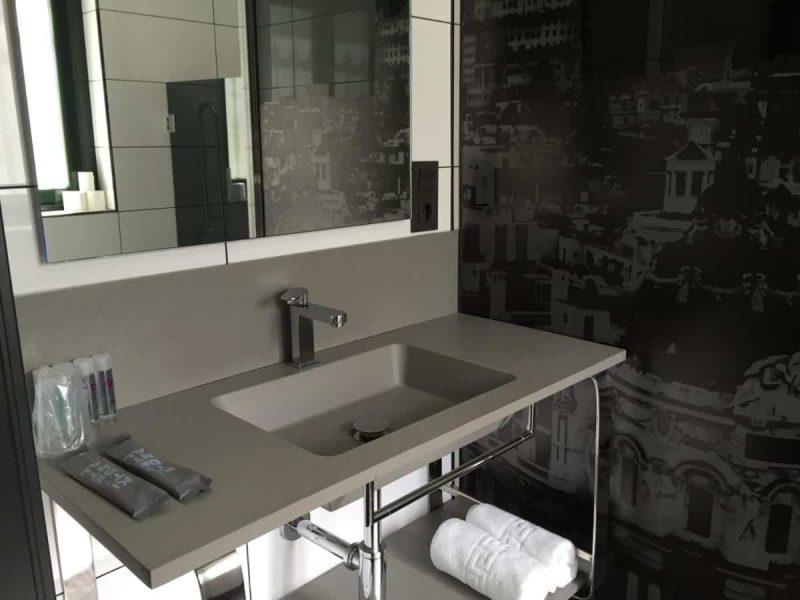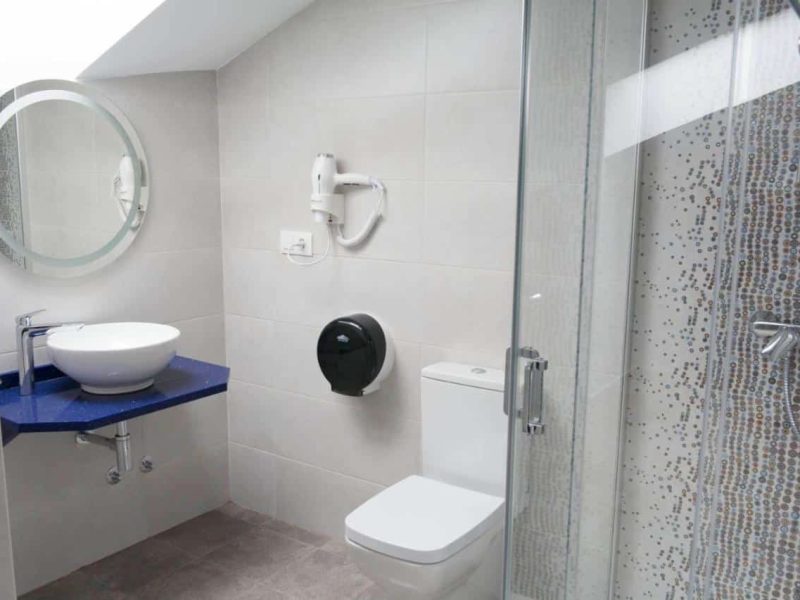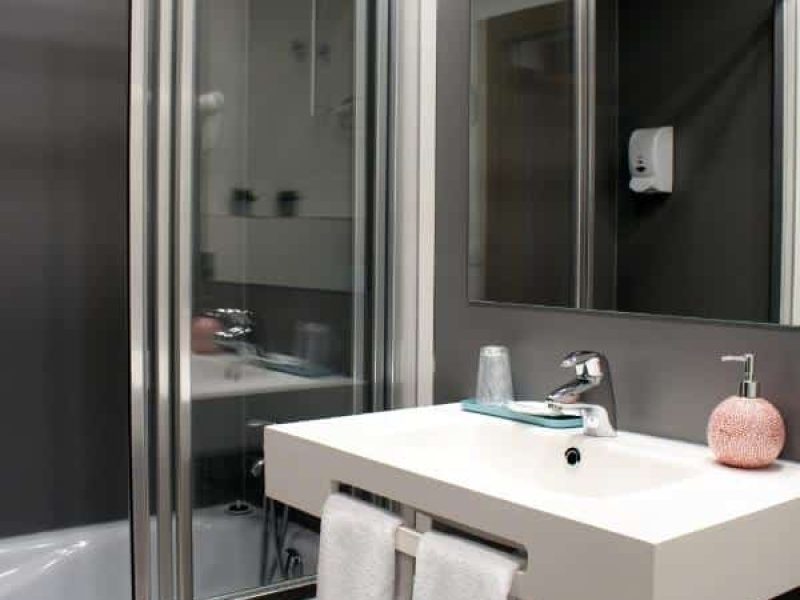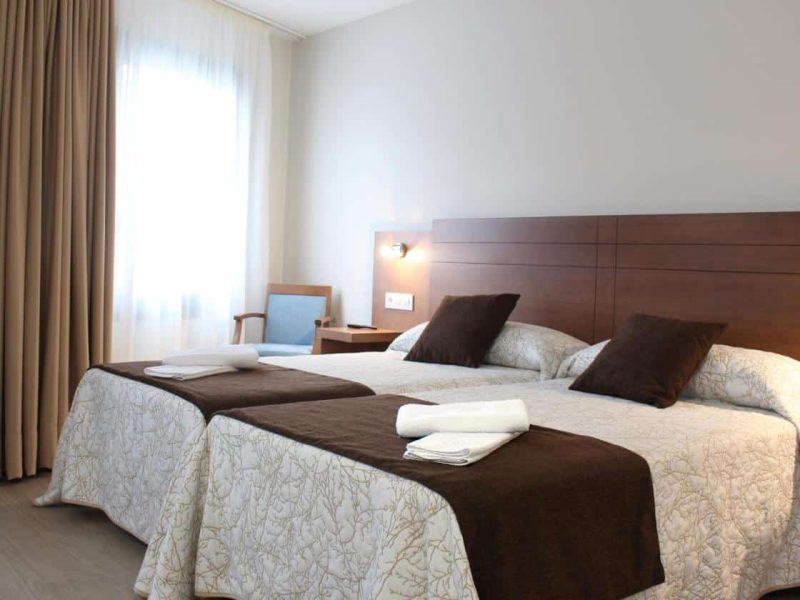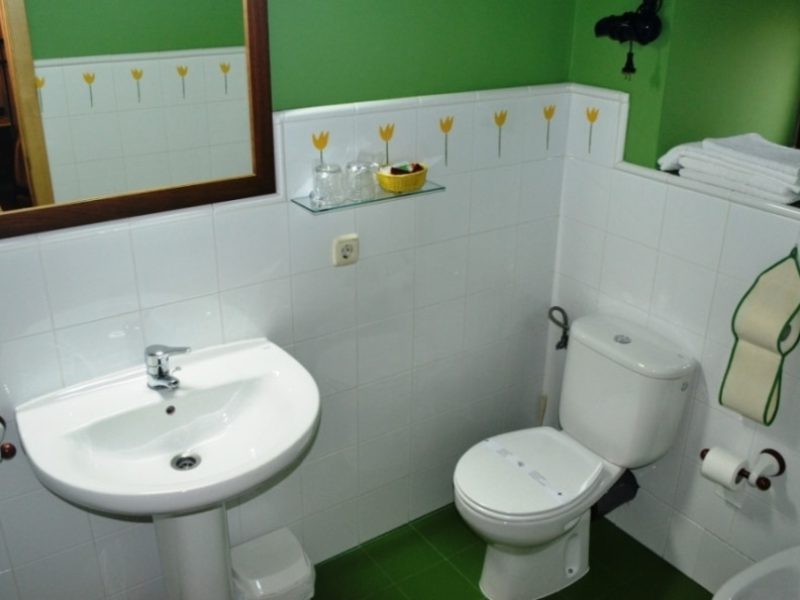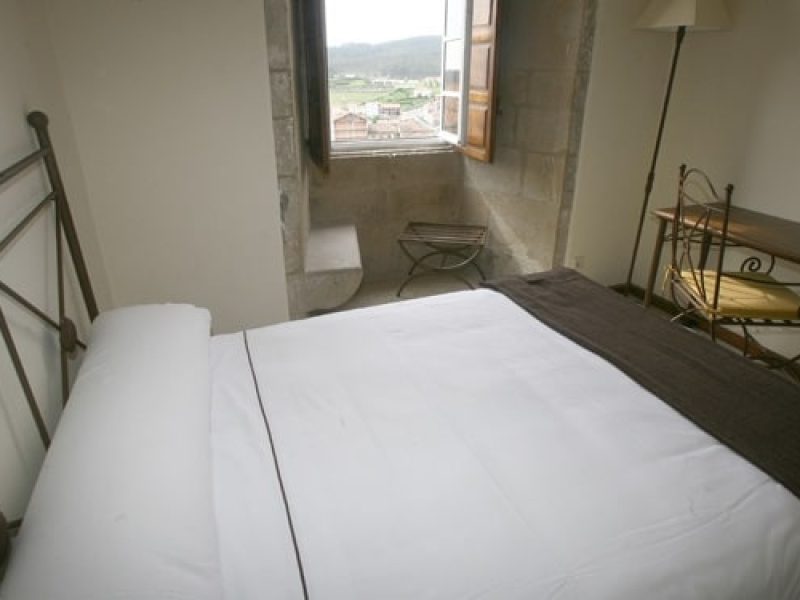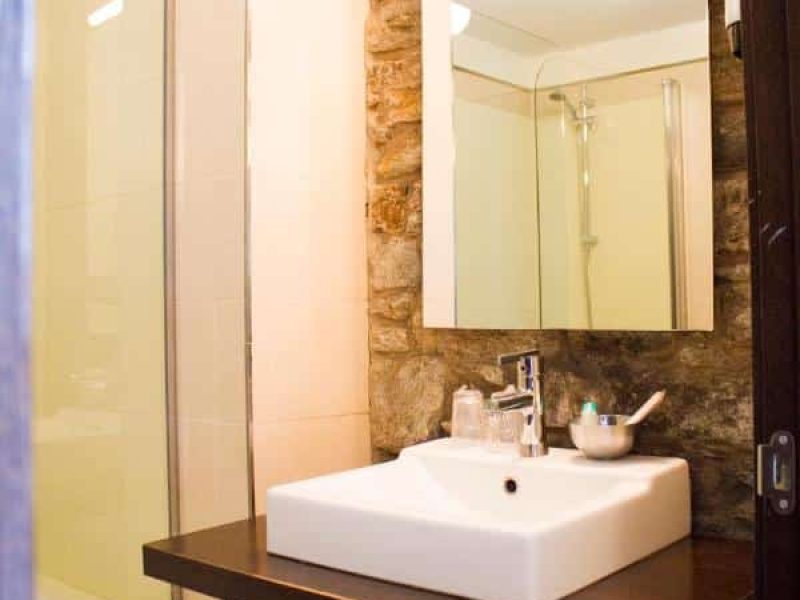Way from Sarria to Santiago
The most popular way of the
Camino. Go through it and achieve Compostela!
More details
Price / person
€545 (double room)

Origin
Sarria, Galicia

Destination
Santiago de Compostela, Galicia

Duration
7 days / 6 nights / 5 stages

Total Kms
111 kms
Way from Sarria to Santiago
A unique journey
Your journey to the European essence.
Way
Immerse Yourself in History and Landscapes
Ready for a unique journey that will take you through stunning landscapes and historic sites? Imagine walking along centuries-old paths, laid out by pilgrims over the centuries. From majestic landscapes to tangible history, the Camino from Sarria to Santiago de Compostela is your ideal adventure.

Your adventure begins here
If you are looking for a special adventure, we present a journey that promises inner exploration and connection with the essence of European history.
From ancient culture to gastronomic authenticity, each day on the Camino will bring you unforgettable moments that will accompany you throughout your life.
For those seeking enrichment, like-minded company and unique experiences, we are here for you. Your peace of mind matters: we provide all the necessary services letting you enjoy your journey. Ready to start this adventure on the Camino de Santiago from Sarria?


Do you decide to do the most popular route of the Camino de Santiago?
The Camino de Santiago is not just a route; It is a personal transformation. Discover majestic landscapes, experience a deep spiritual connection and immerse yourself in the rich history, culture and tradition that this unique trip offers. And for your peace of mind, book with a Free Cancellation guarantee up to 10 days before the date start!
Service
Services
These are the services included in the price, without extra charges
no surprises. Travel the safe and peaceful Camino!
What does the trip include?
- Accommodations in Hotels, Manor Houses, Rural Houses, Hostels
- Special breakfast to start your days with energy.
- Travel assistance insurance valid throughout Spain.
- Assistance vehicle available in case of emergency during your journey.
- Digital informative dossier of the Camino to keep you informed.
- Telephone assistance en route to answer any questions.
- Luggage transfer at each stage: 1 suitcase per person with a limit of 20 kg!
- Special gifts, including the Pilgrim's Credential, the Pilgrim's Shell, and a Typical Galician Product.
- No cancellation fees up to 10 days before starting the Camino.
- VAT included in the price.
Customize your route 100%.
Complement it with optional services!
- Possibility to divide the stage from Palas de Rei to Arzúa into 2 days.
- Extra night in Santiago.
- Cancellation Insurance for residents in Spain.
- Cancellation Insurance for residents abroad.
- Day trips by bus to Finisterre (Costa da Morte) and/or Rias Baixas. See our tours for more details.
- Option to carry additional luggage if you need more than 1 suitcase per person.
Remember that the cost of optional services will be added to the base price of
your route. We are committed to making your pilgrimage an experience
unforgettable and carefree. Buen Camino!
Opinions of our customers on Google
Other pilgrims have already lived the experience of the Camino de Santiago with our support and planning. And you, what are you waiting for?
Esther Martinez
2023-03-06
Hacer el camino siempre es un reto, pero hacerlo dentro de un grupo de 23 personas es un reto aún mayor!!
Queremos agradecer a Mundiplus su buen hacer, su organización, los maravillosos alojamientos que nos buscó y nos reservó, su atención completa durante cada día, ante cualquier necesidad, cualquier duda... esto nos ha permitido poder HACER el camino y no tener que preocuparnos de absolutamente nada más.
Nuestro más sincera felicitación y agradecimiento!!!
Liesl Claus
2022-10-20
The Mundiplus team made our Camino experience a wonderfully memorable one. We loved it and had a wonderful time. The hotels, luggage transfers and all the other aspects they did for us was perfect. Thank you so much Team Mundiplus.
Antonio Luna Aguilar
2022-10-20
Llevamos seis años haciendo el Camino de Santiago con esta agencia y no podemos más que decir que lo organizan estupendamente: nos buscan los mejores alojamientos, no sólo por la calidad de los inmuebles, que en algunos lugares no hay otra cosa, sino en el trato humano del personal que los regenta.
Cuando surge algún problema, por pequeño que sea, la respuesta es inmediata.
En fin, que no tenemos más que agradecer lo bien que lo hacen y recomendar su servicio a todo aquel que quiera hacer el Camino.
Teresa Tejeda
2022-10-19
Excelente servicio el proporcionado por Mundiplus! Nos reservaron hoteles muy lindos y el transporte de maletas funciona a la perfección. Además , tuvieron unos detalles muy lindos como regalitos y unas tortas de Santiago espectaculares al final. Gracias por hacer que lo tedioso del viaje fuera muy tranquilo y pudiéramos disfrutar lo bello del viaje!
Isabel Alias
2022-10-19
Después de mucho esperar, este año hemos podido hacer un tramo del Camino francés desde Sarria a Santiago de Compostela. Todo salió a la perfección: un tiempo esplendido, una experiencia increíble por el entorno, los paisajes, las sensaciones y, sobre todo, por la magnífica gestión de Viajes Mundiplus: los hostales y casas rurales fueron estupendos, limpios y cómodos; el personal atentísimo. No tuvimos problema alguno. Fue un acierto decidirnos por esta Agencia con la que esperamos repetir otros años. Gracias.
xavier gallego garcia
2022-10-19
Tenía muchas ganas de hacer el camino de Santiago, después de diferentes consultas a distintas agencias, Viajes MUNDIPLUS fue la que mejor se adaptó a nuestras solicitudes facilitándonos todo tipo de información y consejos. La organización espectacular, tanto los hoteles, pensiones, casas rurales que nos reservaron , a cual mejor, pendientes de todo, trato super amables, para repetir.
Antonio y su equipo de 10, sin dudarlo nuestro próximo camino lo organizará Viajes MUNDIPLUS .
Seguir así
Muchas gracias por todo.
Isabel Garcia Alonso
2022-09-27
Hicimos el Camino Portugués, experiencia altamente recomendable.
El seguimiento por parte de Mundiplus excelente, en todo momento nos han atendido en nuestras consultas y necesidades
Ana Rojas Pastor
2022-09-13
Camino a Santiago desde Sarria en familia y con amigos, Mundiplus nos organizo el viaje para un grupo de 14 personas, todo perfecto !!! Enhorabuena, mejor imposible!!!
Stre G. F.
2022-09-09
Una vez más hemos quedado más que encantadas con los servicios de Mundiplus.
Absolutamente TODO de Diez sobre Diez.
Los alojamientos increíbles asi como el personal, amables atentos correctos serviciales en fin., de verdad que Maravilloso y me quedo corta. Agradecer el buenísimo trabajo , y a Antonio un reconocimiento especial aunque Todo el equipo es estupendo y desde luego SUPER RECOMENDABLES
GRACIAS ????
Volveremos a Caminar Juntos.
Book now!
Please Indicates the number of people
Stages of the Camino de Santiago from Sarria
Your Journey in 5 Stages: Discover the Camino de Santiago, from Sarria to the majestic Santiago de Compostela.
Day 1: Arrival in Sarria. Accommodation.
Welcome to the beginning of your journey. Get ready for an unforgettable adventure!
Day 2: Stage from Sarria to Portomarín (22.75 kms)
- Duration: 5h 30m
- Difficulty: Low
Breakfast and start of the first stage of our Camino de Santiago from Sarria.
This is one of the most iconic sections of the French Way, traveled by many pilgrims towards Santiago de Compostela, and where we pass the legendary “100 km” milestone.
The beauty of its landscapes must be highlighted, with majestic forests alongside riverbeds, enhancing the charm of the place.
We cross, with little difficulty and comfortably, the narrow and sometimes winding “corredoiras” that connect paths between the typical Galician villages of rural Galicia, with their rich architectural heritage.
Finally, we must mention the views of the Belesar Reservoir, located as we approach Portomarín, beneath which the old village is submerged.
Arrival in Portomarin. End of the stage. Accommodation.
Day 3: Stage from Portomarín to Palas de Rei (25 kms)
- Duration: 6h 15m
- Difficulty: Low
Breakfast and start of the stage.
We begin the Camino and, after leaving Portomarín, we ascend towards the Serra de Ligonde.
On this way, which is easily walked due to the terrain, we find sacred symbols of significant religious meaning, known as “Cruceiros.”
It is also worth mentioning some temples near the town of Palas de Rei, such as the Monastery of San Salvador de Vilar de Donas.
Arrival in Palas de Rei. End of the stage. Accommodation.
Day 4: Stage from Palas de Rei to Arzúa (29.5 km)
- Duration: 7h 30m
- Difficulty: Medium
Breakfast and start of the stage.
This stage is the longest one in Galicia.
We leave Palas de Rei and the province of Lugo, heading towards the province of A Coruña, entering its dense forests that lead us to a way of oaks and eucalyptus trees.
We cross and visit villages like Leboreiro and the town of Melide, well known for its octopus, which must be tasted no matter what.
We continue towards beautiful spots like the Catasol River. Through its lovely surroundings, it leads us to the Ribadixo da Baixo Bridge and towards the municipality of Arzúa, famous for its cheeses.
Arrival in Arzúa: End of the stage. Accommodation.
RECOMMENDATION
For pilgrims with low physical preparation or those who prefer to take this longer stage more leisurely, it is recommended to split it into two days:
Stage: Palas de Rei – Melide (15.2 km)
Stage: Melide – Arzúa (14.5 km)
Day 5: Stage from Arzúa to Pedrouzo (19.2 km)
- Duration: 4h 30m
- Difficulty: Low
Breakfast and start of the stage.
Comfortable way with slight ascents, where we cross forest tracks that pass through small villages, alternating with stretches of way.
Once again, the main feature will be the eucalyptus trees that populate the meadows, lining up one after another and beautifying the Galician horizon. The arrival in Santiago de Compostela and its Cathedral is approaching.
Arrival in Pedrouzo. End of the stage. Accommodation.
Day 6: Stage from Pedrouzo to Santiago de Compostela (19.9 km)
- Duration: 5h
- Difficulty: Low
Breakfast and start of the stage.
Reaching Santiago is something special for every pilgrim. Many emotions mix together, but the excitement of stepping onto the Obradoiro Square is guaranteed.
The way continues peacefully through tree groves, leading us towards the last villages of the O Pino area.
From the hill of Monte do Gozo, the city of Santiago de Compostela awaits us, and we begin a journey through urban stretches that ends at the Cathedral.
Arrival in Santiago de Compostela. End of the Last 100 Kms of the Camino de Santiago from Sarria and the beginning of “Your True Camino.” Accommodation.
All of Santiago de Compostela is worth mentioning, especially the Cathedral of Santiago and its restored Pórtico de la Gloria, which deserves a special visit, along with its surroundings.
DID YOU KNOW the Camino de Santiago from Sarria doesn’t end at the Cathedral of Santiago?? It goes all the way to the end of the world! ¡Ultreia et Suseia!
Once in Santiago, which is the end of the French Way, if you have more days, you can extend the Camino to Finisterre-Muxia, which for our ancestors was once “the end of the known world.”
Another option is to add extra nights in Santiago and take 1-day excursions to Finisterre and/or the Rías Baixas.
Day 7: Breakfast – End of our services
We have reached the last day of your trip! Enjoy breakfast and conclude this unforgettable experience with us.
Thank you for being part of this adventure!
This itinerary will take you through the most popular stages of the Camino Frances and allow you to experience the beauty of Galicia and the culture of the Camino de Santiago. Make sure you book accommodation in advance, as it can get busy, especially in peak season. Have a good trip and good Camino!
Alojamiento
In our constant efforts to provide the best experience to our customers, we want to assure you that we are committed to your rest and comfort. The accommodations we offer have been selected with great care and provide private rooms with exclusive bathrooms, along with all the necessary services so that you can enjoy your stay to the fullest. It is important to note that we will never accommodate you in hostels.
As these accommodations have limited capacity, we will provide you with the exact name once confirm your reservation and verify availability on the dates of your choice. Your satisfaction is our priority!

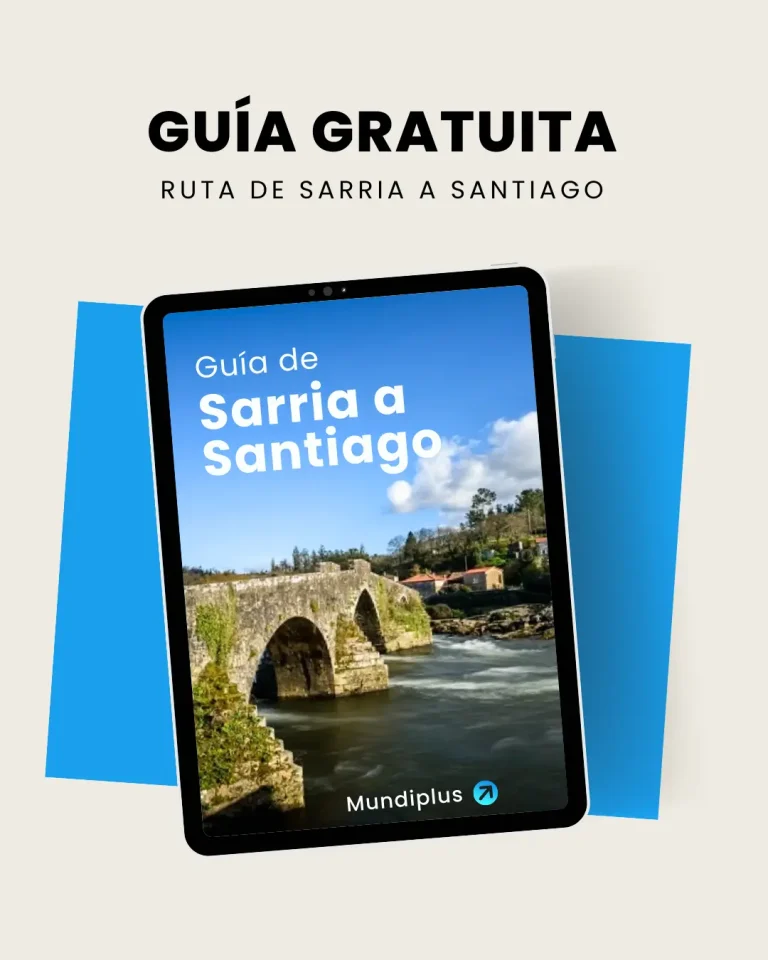
Get the FREE guide from Sarria to Santiago
Here you will find all the information about the most popular route of the Camino, the route from Sarria to Santiago. Download it and discover how to get Compostela!
Frequently Asked Questions
The Camino de Santiago from Sarria in 7 days
The generic way we propose is completed in 7 days – 6 nights – 5 stages. If you have fewer days, we can also design the Camino de Santiago in 4, 5, or 6 days.
We understand that your goal is still to reach the Cathedral of Santiago, so we can choose from different alternatives:
We can suggest that you walk more kilometers per day, as long as your physical condition allows it.
We can eliminate a less attractive stage and cover those kilometers by vehicle.
Last 100 km of the Camino de Santiago from Sarria (Short Stages)
The Camino de Santiago from Sarria, in the Lugo region, is part of the French Way variant. As you can see in the itinerary above, it has 5 generic stages with an average of 22 km per day. However, at Viajes Mundiplus, we can adapt the kilometers based on your physical capacity and the level of relaxation with which you wish to approach this ancient way.
This itinerary we have designed for the Last 100 km of the Camino de Santiago from Sarria with stages that have fewer kilometers than those originally set is designed for those who wish to complete this section of the French Way at a more relaxed pace, even more so.
The breakdown of stages we have prepared is ideal for families with small children and for elderly people who, due to physical limitations, can only or prefer to walk fewer kilometers than the general stages.
Here’s how our new proposal for completing the Camino from Sarria in 10 days would look:
Adapted Itinerary (10 days – 9 nights – 8 stages)
Day 1.- Arrival in Sarria. Accommodation.
Day 2.- Stage Sarria – Ferreiros (13.75 km). Accommodation.
Day 3.- Stage Ferreiros – Gonzar (17 km). Accommodation.
Day 4.- Stage Gonzar – Palas de Rei (17 km). Accommodation.
Day 5.- Stage Palas de Rei – Melide (15.2 km). Accommodation.
Day 6.- Stage Melide – Arzúa (14.3 km). Accommodation.
Day 7.- Stage Arzúa – O Empalme (15 km). Accommodation.
Day 8.- Stage O Empalme – Lavacolla (15 km). Accommodation.
Day 9.- Stage Lavacolla – Santiago de Compostela (10 km). Accommodation.
Day 10.- Breakfast. End of our services.
What to eat and typical dishes in The Last 100 Kms of the French Way?
We know that one of the main attractions of doing the Camino de Santiago with organized trips in Galicia is being able to enjoy its varied gastronomic offerings: Lacón with turnip tops, octopus, tetilla cheese, empanadas, stews, etc.
Taking the French Way is an ideal option not only to learn about the customs of these historically rich villages. Additionally, it’s the perfect excuse to taste a very diverse cuisine.
Moreover, as you may know, this is the most popular way of all the ones that lead to the Cathedral of Santiago. What do we mean by this? That you will find a countless number of gastronomic offerings in every town you pass through. So many that it’s completely impossible to list them all here.
That’s why we want to help a bit more in detail. If you’re unsure where to eat on the French Way from Sarria to Santiago, we’ll point out some suggestions. Of course, we will also talk about the typical dishes that characterize this way.
Gastronomy on the French Way
Eating well during this journey is as important as carrying good equipment or staying in comfortable accommodations. Throughout this way, you will find various restaurants offering the Pilgrim’s Menu. The majority include bread, drink, two traditional dishes, and dessert.
In addition, the dishes are excellent value for money. The best part is that you’ll be able to taste local products such as cheeses, chestnuts, honey, as well as different typical dishes. Some of the main ingredients are octopus, fish (eel), shellfish, and game meat.
Similarly, don’t forget to try the main desserts, including the soft cakes from Samos and the cake from Portomarín. The latter is made with an almond base and sweet “melindres,” which are similar to doughnuts with glaze, typical of many Galician regions.
Typical Dishes and Products on the French Way
If you’re planning to do such a long journey, it’s normal to think about what to eat along the way. After all, those kilometers deserve a good gastronomic reward. Of course, in all the towns from Sarria to Santiago, you can enjoy delicious products and typical dishes that will delight you.
Sarria
Among the typical dishes you can taste in Sarria, we highlight octopus a feira, Spanish omelette, and Padrón peppers. They also offer a variety of meats such as ribeye steak or grilled entrecote.
Additionally, the homemade croquettes are delicious, as are the game meats (partridge or wild boar). And if that’s not enough, you can try the Porco Celta, an autochthonous pig breed that has been revived, used to prepare excellent cured meats (chorizo or pressed cracklings).
You should also consider visiting the bread museum and learning about the making of tetilla cheese. You will have an unmatched gastronomic experience there.
Portomarín
In this town, you can taste high-quality Galician products such as chestnuts, bread, cheeses, pork, and beef. Additionally, you can try the typical dish. This is made with eel, a teleost fish that lives between the sea and the river, making its meat highly prized.
Also, don’t miss the exquisite eel empanadas accompanied by orujo liquor. For dessert, we recommend the typical tarta de paradela, made with flour, eggs, sugar, and almonds.
Palas de Rei
This is a well-known village on the French Way of Santiago. Undoubtedly, its typical dish is Padrón and Herbón peppers. So, you must try fried peppers, roasted and topped with coarse salt.
It is also famous for its wide variety of fish and shellfish (king crab, shrimp, clams, octopus, cuttlefish, trout, lamprey). Among its special dishes, you’ll find game meats in season and Galician beef.
It’s important to mention that cheeses and products derived from pork are highly sought after by visitors.
Arzúa
The signature product of this town is the Arzúa-Ulloa cheese. It is made in the municipalities of Arzúa, Melide, O’Pino, Monterroso, and Palas de Rei. It is a soft cheese made from cow’s milk, aged with a thin, elastic rind of bright yellow color.
Its aromas are of butter and yogurt with hints of vanilla, cream, and nuts. It also has a sweet and sour taste at the same time. It’s ideal for tasting on its own or accompanied by quince jelly.
Pedrouzo
In this place, you can find products such as cheese, Ulla river wine, honey, fresh garden produce, and of course, beef and pork. Additionally, you can taste the Piñeira breed rooster and hen, a dish praised in the local cuisine.
This town also offers typical Galician dishes such as octopus, Galician stew, and empanada.
Santiago de Compostela
In the capital of Galicia, you can enjoy a wide variety of traditional Galician dishes. We highlight octopus, fish, shellfish, assorted empanadas, raxo, lacón with turnip tops, and broths.
Additionally, don’t miss the famous Santiago cake, decorated with the Santiago Cross. You should also try the Monterroso ham, Queixo do Cebreiro, or Samos cakes.
Where to eat from Sarria to Santiago?
Restaurants with Gastronomic Specialties
Of course, on the Camino de Santiago, there are establishments that are a must-visit. For example, along the way from Sarria to Santiago, there are restaurants offering a wide variety of starters, wines, products, and specialties with unique presentations of traditional dishes.
Sarria
You can find Pulpería do Luis, Roma, and A Travesía Dos Soños.
Portomarín
Notable are O Mirador, Restaurante Pérez, and Posada del Camino.
Palas de Rei
You will find A Parada das Bestas, Mesón A Brea, and Pulpería A Nosa Terra.
Melide
We highlight the famous Pulperías Ezequiel and A Garnacha.
Arzúa
In Arzúa, there are restaurants with extensive menus to choose from, such as Casa Nene, Fonte do Picho, and Casa Teodora.
Pedrouzo
Local favorites include O KM19 and Café-Bar O Pedrouzo.
Santiago de Compostela
In Santiago, you can enjoy places like Abastos 2.0, Damajuana, and O Gato Negro, one of the most popular establishments in the city.
How to get to Sarria to start the Camino
We provide you with the different options on how to reach the Camino de Santiago from Sarria, a town that marks the minimum distance of 100 kilometers for walking pilgrims to obtain the “Compostela” certificate.
Option 1: You can arrive by private car:
and leave your vehicle parked in Sarria. You can park near your accommodation. It’s a very safe and small town, where to date, there have been no security issues. Another option is to request private parking. When you finish the last 100 km of the Camino Francés, you can return for your vehicle by bus or request our optional transfer service in a private vehicle for you or your group.
Alternatively, you can drive directly to Santiago de Compostela and park in Santiago de Compostela in private parking, which has very affordable rates. Once parked, you can take a bus to Sarria (there’s only one available schedule), or you can request our private transfer.
Option 2: Bus
Santiago>Sarria
From Santiago, you can go directly by taking the Monbus company bus, which departs at 11:00 PM and arrives at 1:05 PM (2h 5′).
If you miss this bus, you’ll need to go to Lugo and transfer to Sarria. The total duration of both trips is approximately 3h 15′.
– From Santiago de Compostela city or from the Santiago Airport, you can travel to Lugo with the Freire bus company.
– In Lugo, you’ll need to transfer to Sarria with the Monbus bus company.
Madrid>Lugo>Sarria
– From Madrid to Lugo with the Alsa company, with frequent departures from Madrid’s Estación Sur de Autobuses and from Madrid Airport (Terminal 4).
– From Lugo to Sarria with the Monbus company.
*We recommend spending a few hours visiting Lugo and its famous Roman walls before heading to Sarria.
Option 3: Train (Renfe). Direct trains every day from Madrid and Barcelona. Currently, on the Madrid to Sarria way, you’ll reach Ourense by train and from there, Renfe offers a bus from Ourense to Sarria (approximately 1 hour 15 minutes). This is due to ongoing construction work until July 2023.
Option 4: Plane
The nearest airport to Sarria is Santiago de Compostela, about 1 hour 15 minutes by car.
From here, there are two possibilities to reach Sarria:
– By bus, as mentioned earlier.
– Private transfer with us: pick-up at Santiago Airport and direct transfer to Sarria in approximately 1 hour 15 minutes. Please consult us for service rates.
Upon your arrival in Sarria, an unforgettable experience begins, and at the next point, we’ll recommend what to see and do on your Camino de Santiago from Sarria.
What to see and do on the Camino de Santiago from Sarria (Travel Guide)
Stage from Sarria to Portomarin
In Sarria, among other landmarks, we can visit the Church of San Salvador, a Romanesque church with a Gothic façade, and the Convent of A Magdalena. We will admire the tower of the old medieval castle, as well as the Rúa Maior.
We leave Sarria through the Ponte Aspera to continue towards Barbadelo and Ferreiros, where we find two Romanesque churches: the Church of Santiago (Barbadelo) and the Church of Santa María (Ferreiros).
Portomarin is a beautiful town by the Belesar Reservoir, where the old city is submerged (which can be seen in the summer when the river has a lower flow).
The town is divided into two neighborhoods: San Nicolas and San Pedro. Don’t miss a visit to the Chapel of Our Lady of the Snow, as well as the grand San Nicolás Church-Fortress, built by the monks-knights of the Order of Saint John of Jerusalem in the 12th century. The church was constructed by a workshop of disciples of Master Mateo. Portomarin produces one of the most recognized spirits in Galicia, and an annual festival is celebrated.
The Romanesque façade of the Church of San Pedro, the 17th-century Pazo de Berbetoros, and the 16th-century Pazo del Conde da Maza are other attractions you can find in this beautiful town.
In Sarria, among other landmarks, we can visit the Church of San Salvador, a Romanesque church with a Gothic façade, and the Convent of A Magdalena. We will admire the tower of the old medieval castle, as well as the Rúa Maior.
We leave Sarria through the Ponte Aspera to continue towards Barbadelo and Ferreiros, where we find two Romanesque churches: the Church of Santiago (Barbadelo) and the Church of Santa María (Ferreiros).
Portomarin is a beautiful town by the Belesar Reservoir, where the old city is submerged (which can be seen in the summer when the river has a lower flow).
The town is divided into two neighborhoods: San Nicolas and San Pedro. Don’t miss a visit to the Chapel of Our Lady of the Snow, as well as the grand San Nicolás Church-Fortress, built by the monks-knights of the Order of Saint John of Jerusalem in the 12th century. The church was constructed by a workshop of disciples of Master Mateo. Portomarin produces one of the most recognized spirits in Galicia, and an annual festival is celebrated.
The Romanesque façade of the Church of San Pedro, the 17th-century Pazo de Berbetoros, and the 16th-century Pazo del Conde da Maza are other attractions you can find in this beautiful town.
Stage from Portomarin to Palas de Rei
In Gonzar, we can visit the most important monument of this locality: the Parroquia de Santa María.
In Castromaior, there is the small Church of Santa María, of simple and rough Romanesque style but very well preserved. Inside, you can see a Romanesque sculpture of the Virgin and a 16th-century altarpiece.
In Ventas de Narón, we can see the Chapel of the Magdalena.
The Church of Santiago, in Ligonde, is of neoclassical style and preserves the Romanesque doorway of its predecessor. Just before entering the town, we find the Lameiros Cross (1670), where the four sides of the base represent the Calvary or the death of Jesus (hammer, nails, thorns, and skulls), while the cross shows a relief of motherhood or life.
Stage from Palas de Rei to Melide
We start in San Xulián do Camiño, where we find the Parish Church of San Xulián, a Romanesque temple from the 11th century.
In Leboreiro, we can see the Romanesque Church of Santa María, where the tympanum of the door and the 16th-century murals stand out.
In Disicabo, you can see the small medieval bridge of La Magdalena.
At the entrance of Furelos, we find a splendid four-eyed medieval bridge. Next to it is the Parish Church of San Juan.
Close to Palas de Rei, although outside the way of what to see on the Camino de Santiago from Sarria, is the Church of Vilar de Donas, a Romanesque style church and former Priorate of the Order of Santiago. It dates from the 13th century. The Latin-cross church has three vaulted apses and a crossing with ribbed vaulting. Inside, you can see several tombs of important knights of the Order of Santiago, as well as well-preserved frescoes. It is one of the most well-known examples of Galician Romanesque related to the French Way.
The Pambre Castle, located in Ulloa, is one of the best examples of medieval military architecture in Galicia. It was built in the late 14th century by Don Gonzalo Ozores de Ulloa. The castle is situated on a rocky outcrop and is surrounded by a defensive wall about 5 meters thick. It can be accessed through a small pointed door. The square-shaped building has four towers at the corners and a central keep. Inside, we find the Chapel of San Pedro.
In Melide, as the endpoint of this stage of the Camino de Santiago from Sarria, we recommend the following places to visit:
– First of all, you must try their famous octopus at any of the renowned “pulperías” (octopus restaurants). It also has a magnificent ethnographic museum, Terra de Melide, which is newly built and unique in the area. The cuisine along the Camino Francés is one of the most famous not only in the Camino de Santiago from Sarria but also throughout Spain.
We also highlight the Melide Cross, said to date from the 19th century and possibly the oldest in all of Galicia. Next to this magnificent cross is the Chapel of San Roque (a gem of Romanesque architecture), which many believe resembles the 10€ banknote. The bill simply reflects an example of strict Romanesque style and is not associated with any specific monument (to avoid issues). However, we can say that the arcades and columns of the door of this chapel in Melide embody the purity and perfection of Romanesque style.
– We also highlight the Church of Sancti Spiritus and the Romanesque temple of Santa María.
– In the surroundings of Melide, we can also visit the Pre-Romanesque Church of San Antoniño de Toques, located in a spectacular setting by a waterfall that runs alongside the church. The Pre-Romanesque church consists of a single nave. Above the triumphal arch, there is a Romanesque carving of a Calvary that dates from the 13th century.
Just outside the way of what to see on the Camino de Santiago from Sarria but well worth a detour if you have time is the Monastery of Santa María de Sobrado dos Monxes, located near Melide. It is one of the main medieval monasteries in the province of A Coruña and all of Galicia. It is believed to date from the 10th century, as several written records mention it. It has undergone numerous reforms from the 16th to the 18th century.
Today, the Church of the Monastery of Sobrado dos Monxes is well preserved, along with part of its monastic dependencies, thanks to the work of the Benedictine monks who inhabit it. The church dates from the 17th century and is in Baroque style. It features a spectacular façade with two slender towers. The interior is worth admiring. The monastery preserves three cloisters. It was declared a National Historical and Artistic Monument.
The Pre-Romanesque Church of San Antoniño de Toques is located in a spectacular setting by a waterfall that runs alongside the church. The Pre-Romanesque church consists of a single nave. Above the triumphal arch, there is a Romanesque carving of a Calvary that dates from the 13th century.
Stage from Melide to Arzúa
In Boente, the Church of Santiago stands out, featuring a statue of the Apostle from the 19th century.
In Ribadixo do Baixo, after crossing the medieval bridge, there’s the Ribadixo Pilgrim’s Hospital, the last historical space that remained open to serve pilgrims. At the Ribadixo recreational area, you can take a break and cool your feet in the river.
In Arzúa, the Church of Santiago stands out, with the Gothic Chapel of Magdalena, belonging to a now-gone hospital. Next to a grove of oak trees, the Chapel of A Mota also stands out.
About 5 km outside the way of what to see on the Camino de Santiago from Sarria, is the Pazo de Brandeso, where Valle-Inclán set part of his novel *Sonata de otoño*. The Pazo is privately owned and cannot be visited. It is a noble building with a chapel on its main façade.
Stage from Arzúa to Pedrouzo
In this stage, we can highlight the Parish Church of San Verisimo in the town of Ferreiros.
In Santa Irene, we can visit the Chapel of the Saint, which gives its name to the town. The hermitage is dedicated to this Portuguese martyr. It also features a Baroque fountain said to have healing properties for the skin.
Don’t miss the chance to taste the magnificent Arzúa Tetilla cheese. Since 1989, this cheese, made from whole cow’s milk, has received the designation of Produto Galego de Calidade. It is produced in all the municipalities of the Arzúa-Ulloa region: Arzúa, Curtis, Melide, O Pino, Santiso, Sobrado dos Monxes, Toques, Touro, and Vilasantar (in the province of A Coruña), as well as Friol, Monterroso, and Palas de Rei (in the province of Lugo).
Stage from Pedrouzo to Santiago
Before reaching Santiago, about 4 km away, the Monte de Gozo offers an incredible panoramic view of the city.
In Santiago de Compostela, we find the most important monument of our entire way, the Cathedral of Santiago, whose façade has been recently restored. It is dedicated to the Apostle Santiago. Key details of the Cathedral:
It was consecrated in 1128 and is a prime example of a pilgrimage church.
It is built in the Romanesque style, with later Renaissance and Baroque elements from the 18th century. The church has a Latin-cross layout with three naves divided by semi-circular arches, a tribune, a crossing, and an ambulatory.
Highlighting the work of Master Mateo is the Pórtico de la Gloria, the finest example of Spanish Romanesque.
As a tradition, every pilgrim who can and wishes to, attends the 12:00 and 19:30 pm Mass in the Cathedral. If you’re lucky, you might witness the magnificent Botafumeiro in action. *In 2019 and 2020, due to renovations inside the Cathedral, these masses will take place in other nearby churches. The Cathedral is preparing for the grand celebration of the Holy Year 2021-2022.
The entire Old Town is spectacular, transporting you without warning to the medieval era. It includes the Mercado de Abastos (Food Market) of Santiago. Other highlights include the Galicia Pavilion in the San Lázaro district, the Panteón de Gallegos Ilustres (Pantheon of Famous Galicians), the Chapel of As Animas, Praza de Cervantes, the Museum of the House of the Troya, and more.
You can also explore the surroundings of Santiago and take organized excursions to Costa da Morte and the Rías Baixas.
Another tradition is the embrace of the Apostle Santiago’s image and a visit to his tomb.
It’s a must to visit the Cathedral Museum and the Cathedral rooftops.
The Monastery of San Martín Pinario is located opposite the Plaza de la Azabachería.
The Portico of the Parador de los Reyes Católicos, in the Obradoiro Square, was originally founded as a hospital for pilgrims.
Finally, our recommendations for what to see on the Camino de Santiago from Sarria to Santiago is to explore these incredible places yourself and let us know how you found them.
Are you ready to take on the most popular route of the Camino de Santiago?
The Camino de Santiago is not just a route; it is a personal transformation. Discover majestic landscapes, experience a deep spiritual connection, and immerse yourself in the rich history, culture, and tradition that this unique journey offers. And for your peace of mind, book with a Free Cancellation Guarantee up to 10 days before the start date!






